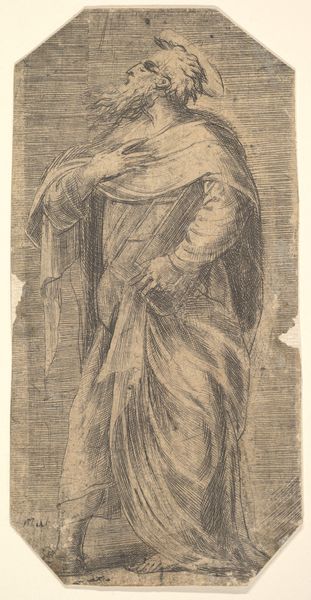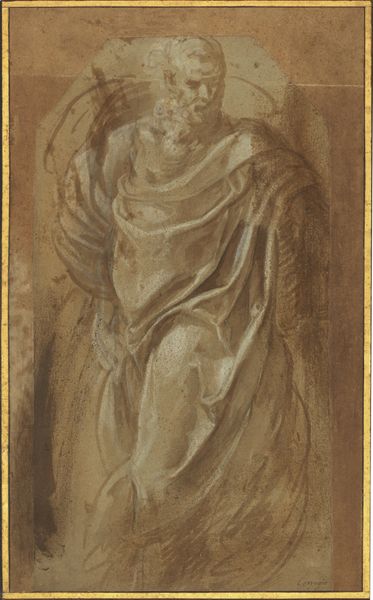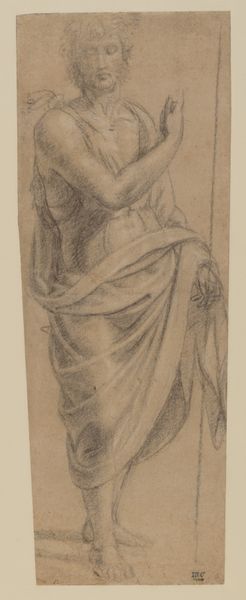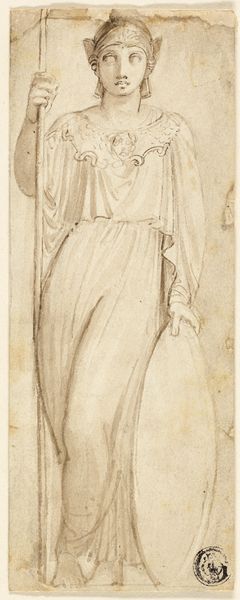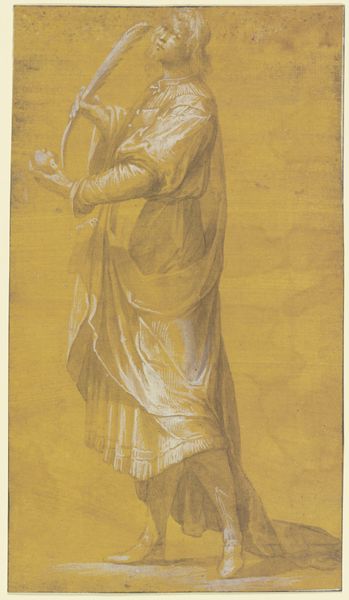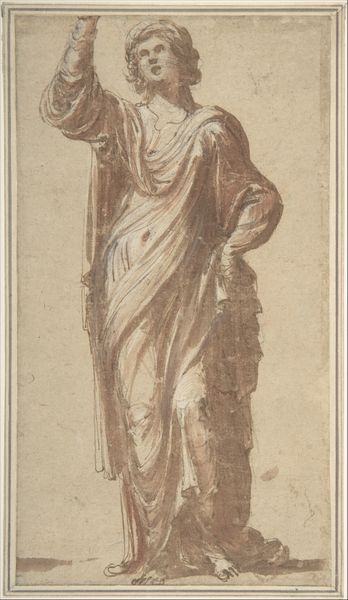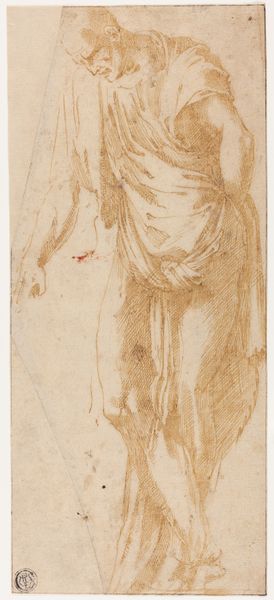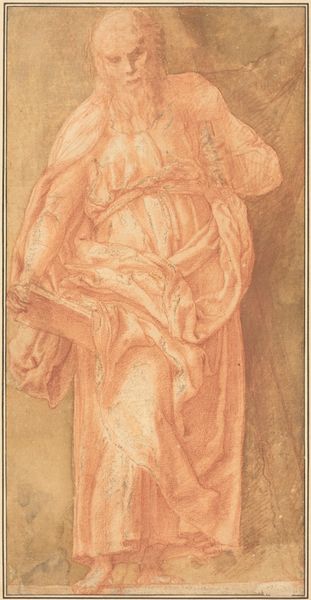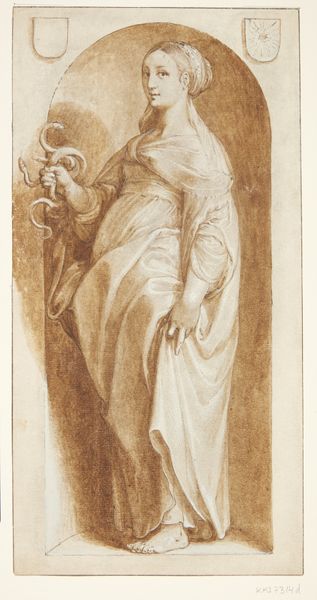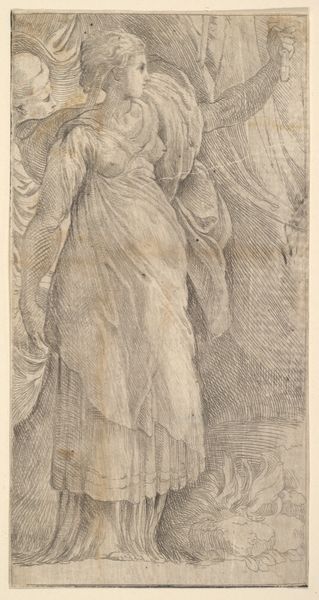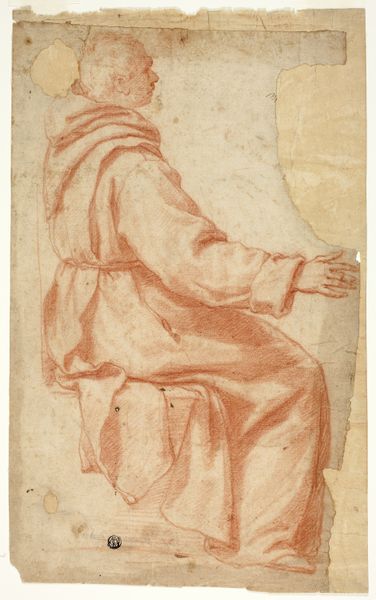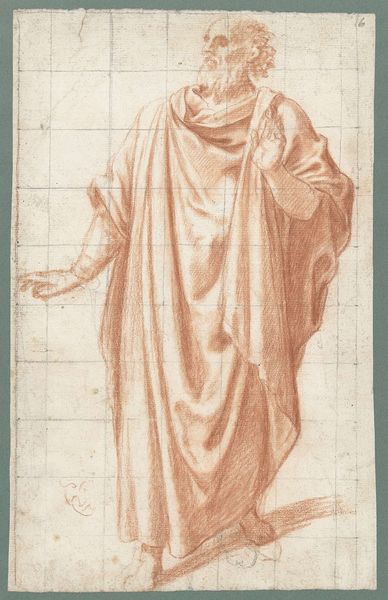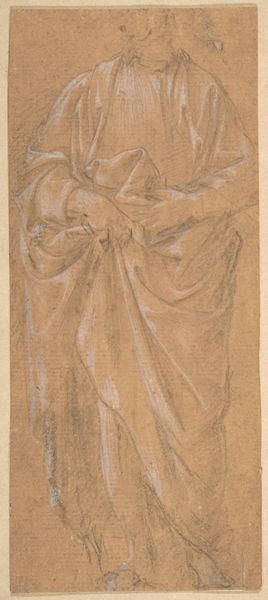
drawing, chalk
#
pencil drawn
#
drawing
#
toned paper
#
light pencil work
#
pencil sketch
#
charcoal drawing
#
possibly oil pastel
#
charcoal art
#
pencil drawing
#
underpainting
#
13_16th-century
#
chalk
#
roman
#
watercolor
Copyright: Public Domain
Editor: Here we have Girolamo Muziano's "Stehender aufblickender König mit Lilienzepter", or "Standing King Looking Up with a Lily Scepter," created around 1570-1580. It's a drawing, seemingly in chalk, on toned paper, and the figure is bathed in this warm reddish hue. I’m struck by how unfinished it feels, like a study. What do you see in this piece that maybe I’m missing? Curator: Well, you’ve correctly identified the key aspects of the piece. I’m particularly interested in how this work reflects the changing role of religious and secular power in late 16th-century Europe. This regal figure, drawn with such apparent freedom, hints at a dialogue between idealized authority and the artist's individual expression. Do you notice how the dynamism of the pose clashes a bit with the static nature expected of royal portraiture at the time? Editor: I do see that now! It's like he’s caught between wanting to be seen as powerful, but also divinely inspired... hence, looking up. It’s more staged than sincere though, wouldn’t you say? Curator: Exactly! And what's the social function of such imagery? Muziano likely intended this drawing as a preliminary study for a larger commission. Consider, then, the patronage system: who commissioned such pieces, and what messages were they trying to convey through them? The very act of creating and disseminating this image, especially if reproduced on a grander scale, becomes an assertion of power and a tool of cultural influence. Editor: So, it's not just a portrait, it's part of a bigger political statement. Thanks, I definitely look at it differently now! Curator: Precisely. By understanding the historical and institutional forces at play, we can appreciate how even a seemingly simple drawing speaks volumes about its time.
Comments
No comments
Be the first to comment and join the conversation on the ultimate creative platform.
